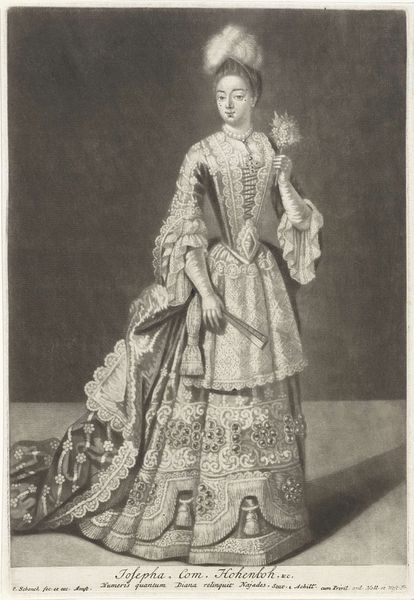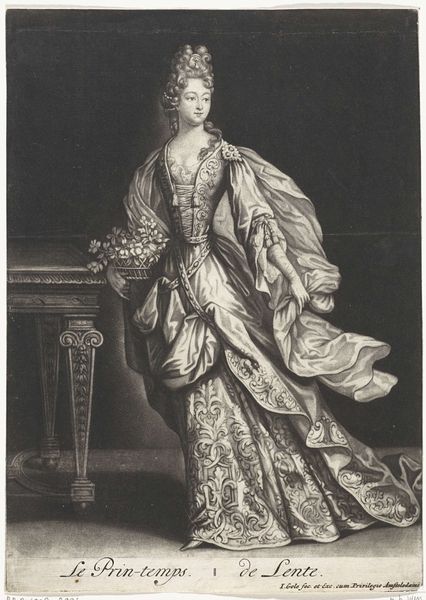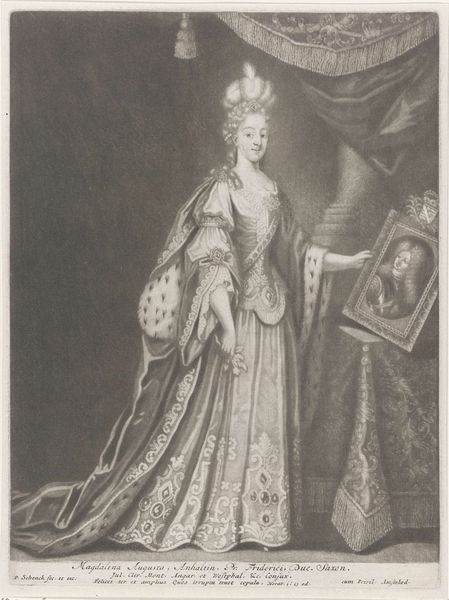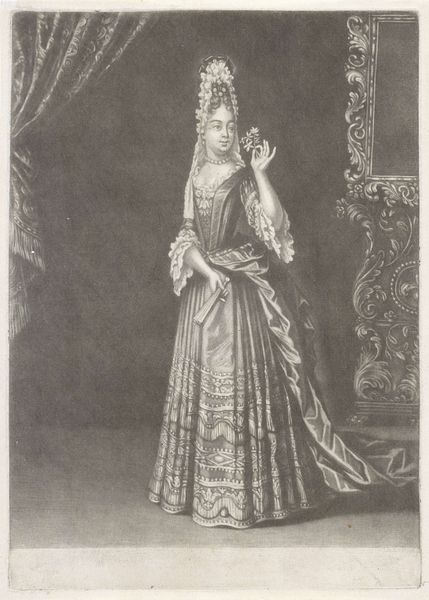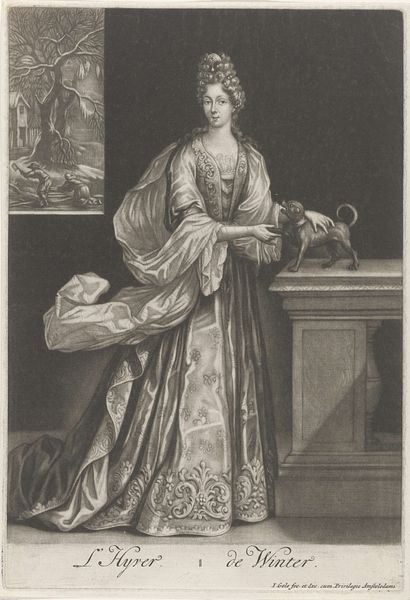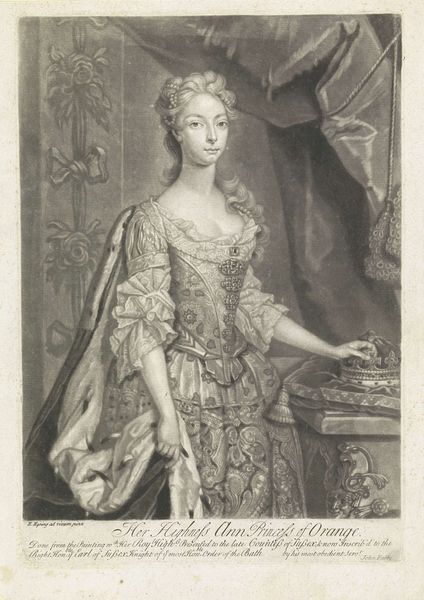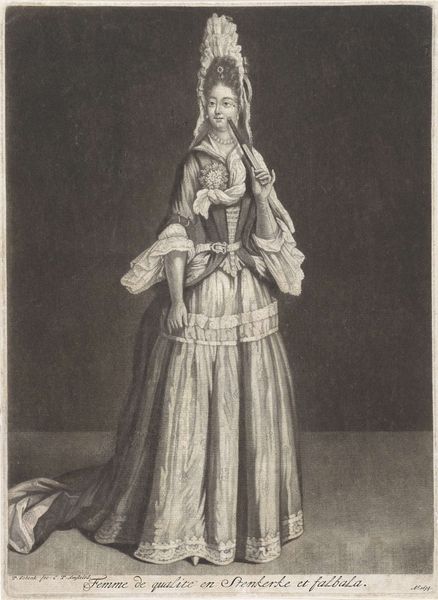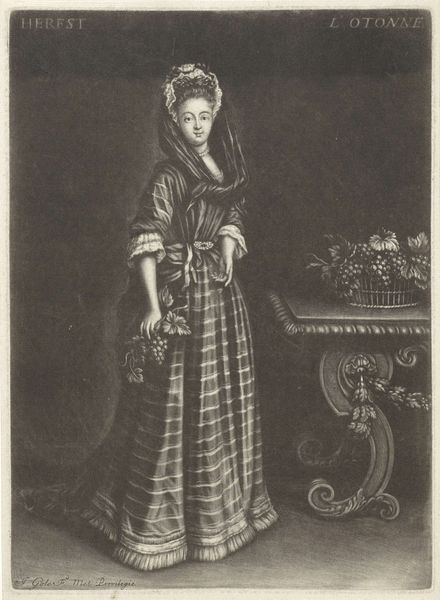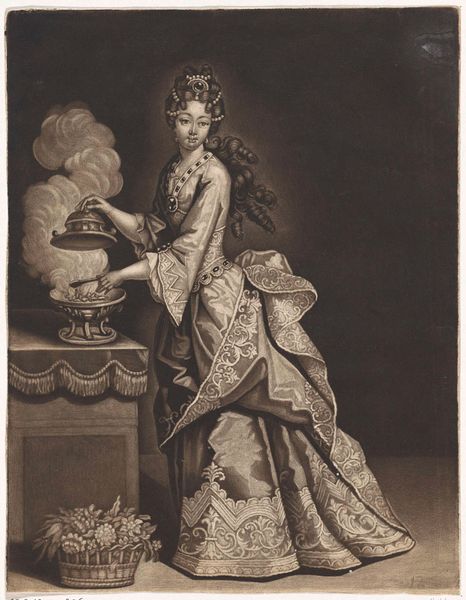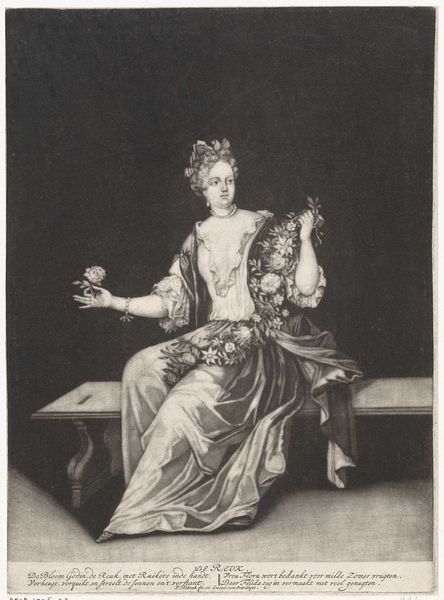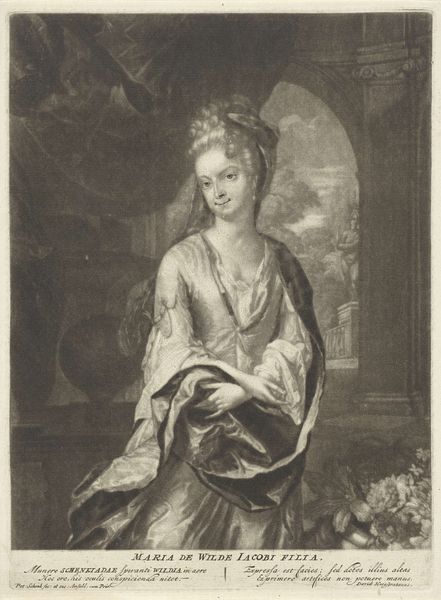
print, engraving
#
portrait
#
baroque
# print
#
history-painting
#
engraving
Dimensions: height 256 mm, width 175 mm
Copyright: Rijks Museum: Open Domain
Editor: So this is a portrait of Anna Augusta, Countess of Hohenlohe, dating from around 1670 to 1713. It's a print by Pieter Schenk, and what strikes me immediately is just the sheer opulence of her gown, all that incredible lace. What’s your take on it? Curator: This image presents Anna Augusta as not just an individual, but as a representative of dynastic power in the late Baroque period. Think about how these portraits functioned within society. They circulated among elites, solidifying family connections and visually reinforcing the Countess's social standing. The exaggerated, almost theatrical, rendering of her attire—the lace, the jewels, even the elaborate headdress—serves less as a true likeness and more as a symbol of her status. Editor: So it's not about realism, but about sending a message? Curator: Precisely. And consider the context: engravings like these allowed for the wider dissemination of images of power. It wasn’t just for display within a private collection. Prints enabled those in power to influence perception and even exert soft power on a wider stage. Is she presented as relatable, approachable? Editor: Definitely not. It’s more about conveying authority and a certain degree of separation, almost like she exists on a different plane than everyone else. Curator: And the way Schenk utilizes line and shading in the print medium - what does that communicate? Is it about the delicacy of lace or the force of dynastic legacy? It’s really both. Images such as these participated in broader socio-political projects. Editor: I hadn’t considered the print as a form of propaganda, but it makes perfect sense. It highlights the function of portraiture extending far beyond the purely artistic. Curator: Indeed. Looking closer, we appreciate the art and also unpack its message.
Comments
No comments
Be the first to comment and join the conversation on the ultimate creative platform.
